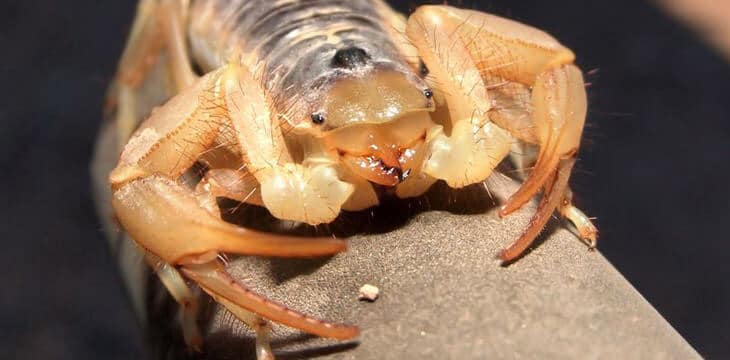
The Arizona bark scorpion has become somewhat of a national celebrity due to its unique coloration and venomous bite. The Arizona bark scorpion belongs to the Scorpionidae family, a group of large, harmless insects. This type of scorpion is common to the desert regions in northern Mexico and the southwestern U.S. A single adult male is about 3.5 inches long, with an average size of three inches; while a female is considerably smaller, at about six inches, with a maximum size of just over ten inches.
The size and appearance of this species vary widely between individuals. They do not grow larger than two inches, although some specimens may exceed four inches in length.
The venomous sting of this species is quite painful to humans but can be deadly to smaller invertebrates such as spiders and insects. The toxin secreted during a venomous sting is quite potent; even the smallest insect can die immediately from the sting. The scorpion is capable of producing three types of toxins, and each type of toxin contains a different effect on an insect's body. The venom contains an anticoagulant, which prevents blood clotting, an anticonvulsant, which paralyze and then stop the transmission of nerve impulses, and an antihistamine, which reduce the effects of histamines in an insect's nervous system. Each type of toxin has different results on different insects, so it is important to read up on each of them before using.
The bark scorpion stings are quite painful but not as painful as other types of scorpions. When they sting, they inject very little venom; but their sting can be quite painful to humans. If you do come into contact with one or have been bitten by one, wash your skin immediately with soap and water, as the anticoagulant and anticonvulsant ingredients can cause swelling and the pain can be extremely severe.
Bark scorpions have evolved into a nuisance pest in many areas of the southwestern U.S. In Arizona, they are particularly aggressive to arthropods, which feed on plant juices. It is likely that the bark scorpion has been feeding on carrion, since many of its scents have been found on dead animals, suggesting that they have been eating carrion for years.
Arthropods may be killed by the venom, but many are unable to digest it and die from asphyxiation. This condition is similar to drowning.
Barkions are commonly found in residential and commercial landscaping areas and it is illegal to dispose of their faeces or their nests. They are often attracted to large lawns and feed on young plants and flowers
Scorpion bark can be removed from landscaping by removing the plants that cover them. There are many different types of scorpions in and around the gardens; taking them out of the ground is not a good idea, as they do not need to eat the foliage. To kill these insects, the roots of the plants must first be dug up and then either crushed or soaked in water and thrown into a trash can. This removal should be done when the scorpions are no longer in the areas where they were feeding.
A large area of the landscape can be processed immediately. There are many different repellents that repel these insects; The most popular repellents are citronella candles, insecticidal soaps, and other insect repellents containing citronella and pyrethrin. If citronella candles are used, it is important to use them only one at a time because they will burn in just a few hours and the insecticide will still be present on the person's skin.
Citronella candles burn for a long time and kill the insects attracted to them, but in fact they will not harm the insect itself. However, they will produce an odor that will help repel insects, especially if sprayed near where the scorpions are.
To kill the infestation, insecticidal soap is used on the treated areas. It is important to spray them at least 6 inches from the edges of the lawn and water before moving anything to the affected area.
Tree pruning is another way to control these scorpions and many people have pruned trees to get rid of them completely. If a tree has been hit by the bark scorpion, trimming the trees leaves, branches and root system will help to keep the scorpion from re-infesting the area.